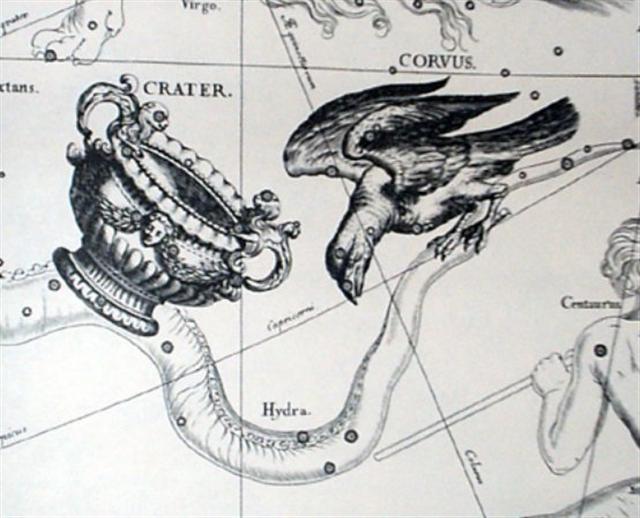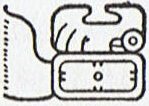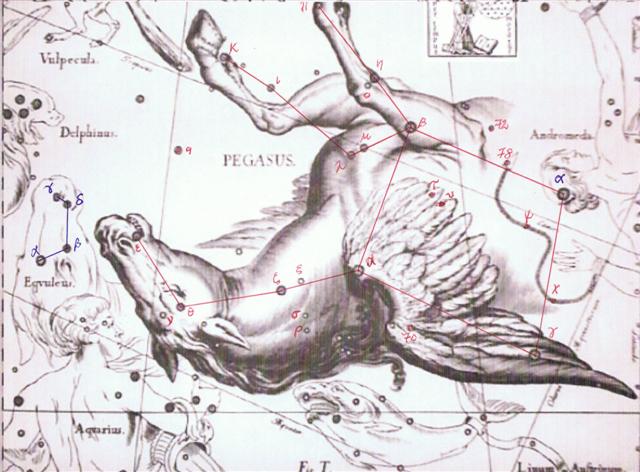In September 18 (day 260 + 1) when π Virginis rose with the Sun this was exactly 181 days after March 21:
September 19 (262) is on the opposite side of the year compared to March 21 (80) and 262 - 364 / 2 = 80. I.e., when in March 21 the star Sirrah (α, at the head of Andromedae) was with the Sun, then ο Virginis could be observed close to the Full Moon. And in September 19 when Sirrah was close to the Full Moon it meant spring equinox had arrived to those who lived north of the equator. Metoro's te hau tea ('the daylight') could have expressed the latter view - the opposite of how the 'black cloth of night' was arriving: ... When the man, Ulu, returned to his wife from his visit to the temple at Puueo, he said, 'I have heard the voice of the noble Mo'o [Moko], and he has told me that tonight, as soon as darkness draws over the sea and the fires of the volcano goddess, Pele, light the clouds over the crater of Mount Kilauea, the black cloth will cover my head. And when the breath has gone from my body and my spirit has departed to the realms of the dead, you are to bury my head carefully near our spring of running water ... The creator of the C text may have added a little dot in Cb7-11 to indicated where the true March equinox on average should be located. Considering the on average better date March 20, there seems to have been those who preferred that date rather than what the Church had decided. September 18 can be counted as 91 * 8 = 728 = 2 * 364. And September 18 has the Gregorian day number equal to 9 * 29. π Virginis would then have been mapped as positioned at 182.0 (= 364 / 2). The equinoxes offer one of the few possibilities for observing a number difference between spring and autumn. The September equinox is usually in day 22 (and not in day 21 as once was decided for the equinox in March). In rongorongo times the Corvus constellation rose with the Sun as a Sign that (north of the equator) the dark cloth of autumn had been reached. Its bright star Gienah (γ Corvi) was with the Sun in September 22 and this was 185 days after March 21, i.e., summer was over.
Possibly Metoro referred to the September equinox with his comment e haga o rave hia - this (e) [as] the bay (haga) of (o) 'biting' (rave) counts (hia):
Stars rise in the east and descend in the west. If stars rule the seasons, then also the seasons should rise (tu) in the east and descend ('die') in the west. The Mayas had an idea of a 'biting hand' at the horizon in the west:
... The manik, with the tzab, or serpent's rattles as prefix, runs across Madrid tz. 22 , the figures in the pictures all holding the rattle; it runs across the hunting scenes of Madrid tz. 61, 62, and finally appears in all four clauses of tz. 175, the so-called 'baptism' tzolkin. It seems impossible, with all this, to avoid assigning the value of grasping or receiving. But in the final confirmation, we have the direct evidence of the signs for East and West. For the East we have the glyph Ahau-Kin, the Lord Sun, the Lord of Day; for the West we have Manik-Kin, exactly corresponding to the term Chikin, the biting or eating of the Sun, seizing it in the mouth ...
The mouth of the reversed
and upside down Southern Fish is receiving
the last trace of Aquarius (the last station
among the 12 in our solar zodiac):
Although, as we have seen, the star Fomalhaut (The Mouth of the Fish) in rongorongo times rose heliacally in March 4, the Arabs had their 24th manzil Al Fargh al Mukdim (The First Spout) defined by a pair of prominent stars in the Pegasus Square, which were rising slightly later:
Metoro may have said tu te ika because he saw rau hei as a kind of 'fish', not necessarily associating the glyph with the position in March 5 and the pair of 'fish mouth stars' (Fomalhaut and Fum al Samakah). ... Rau hei. 1. Branch of mimosa. 2. Killed enemy. 3. Hanged 'fish'. 'Branche du mimosa (signe de mort), ennemie túe (poisson suspendu)' according to Jaussen ... The pair of Hindu nakshatra stations here are connected with someone who has died (who has 'gone to the fishes'):
In September and at the other side of the sky (year) compared to the Pegasus Square was (and still is of course) the Corvus constellation. In the Hindu system Corvus determined the 13th nakshatra Hasta (and 13 is an unlucky number):
This 'hand or fist' can be imagined as a reference to how Raven (Corvus) is grasping ('biting') his 'victims' - those who are going down head first 'in the west' (autumn). But for the Polynesians the date September 22 represented an equinox in spring ('east'). Equinoxes are related to Sun and therefore the heliacal view is the natural one. And instead of an open hand the Hasta stars ought then to have been imagined like a closed fist (or flower bud), similar to time of March 21 north of the equator. Perhaps this explains the curious (for us) method they used for counting on their fingers:
| |||||||||||||||||||||||||||||||||||||||||||||||||||||||||||||||||||||||||||||||||||||||||||||||||||||||||||||||||||||||||||






